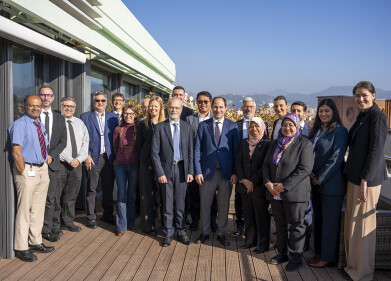Air clean up
How Is India Cleaning up its Roads?
May 16 2017
India’s Coals and Mines Minister Piyush Goyal has announced an ambitious plan to clean up national roads by making all vehicles sold in the country completely electric-powered by 2030. The initiative was revealed at the Confederation of Indian Industry’s annual session for 2017 in New Delhi earlier this month.
If successful, the plan could go some way to alleviating the terrible air pollution that has crippled Indian cities over the last decade. An ever-increasing population, booming economy and rapid industrial growth has resulted in Indian airwaves becoming some of the most polluted in the world. In response, the government have undertaken a string of measures to try and address the problem.
“A public health and economic crisis”
A 2017 report by Greenpeace found that poor air quality claimed the lives of as many as 2.3 million Indians every year. Entitled ‘Airpocalypse’, the report said that the issue had become a “public health and economic crisis”, with 3% of GDP lost to dealing with the effects of toxic smog.
“India's pollution trends have been steadily increasing, with India overtaking China in number of deaths due to outdoor air pollution in 2015,” said the report, highlighting that air pollution deaths were only slightly less prevalent than those caused by tobacco inhalation.
Delhi in particular has posed a threat to its residents’ health, with particulate matter 2.5 (PM2.5) concentrations at more than 13 times the “safe” limit, as designated by the World Health Organisation (WHO). It’s no surprise, then, that ministers have focused their efforts on cleaning up the country’s airways first and foremost in the capital.
A multifaceted approach
In the past, India has attempted to curb pollution through a variety of methods. Last year, the government banned the sale of firecrackers inside the city limits in the wake of the Hindu festival of light, Diwali. For weeks after the celebrations, a heavy cloud of smog hung over Delhi and the pyrotechnics were seen to be a major contributing factor.
While banning fireworks might go some way to improving air quality over the capital during Diwali, it’s considered a knee-jerk reaction by many which won’t tackle the root causes of the problem. An under-regulated industrial sector (India’s equivalent to the UK’s Industrial Emissions Directive (IED) could be considered lenient by comparison and is not heavily enforced, for example) and an excessive amount of polluting cars on Indian roads are seen to be the main contributing factors towards the country’s air quality problems.
With that in mind, Mr Goyal has announced intentions to introduce electric vehicles “in a very big way”, theoretically bringing down costs as well as emissions in one fell swoop.
2030 a bold target
Speaking to a room full of industry delegates, Mr Goyal likened the incentive to a 2015 drive for LED lightbulbs, intended as a means to bring down household energy bills. Likewise, Mr Goyal is hopeful that switching to electric will remove the need to import fuel and thus make it cheaper for everyday Indians to power their cars.
Of course, the huge environmental benefit is also a key factor in targeting the EV industry so aggressively. Mr Goyal conceded that the sector would require governmental support initially, but was hopeful it could be self-sufficient within a few years.
“The cost of electric vehicles will start to pay for itself for consumers,” he explained. “We would love to see the electric vehicle industry run on its own.”
Events
Feb 05 2025 Nantes, France
Feb 16 2025 Kampala, Uganda
Feb 26 2025 Chennai, India
Feb 26 2025 Tulsa, OK, USA
WATERTECH CHINA (GUANGDONG) 2025
Mar 05 2025 Guangdong, China












